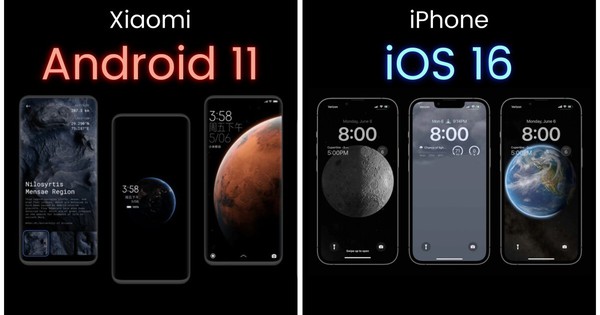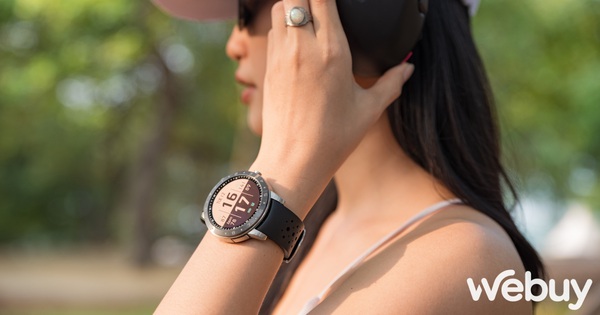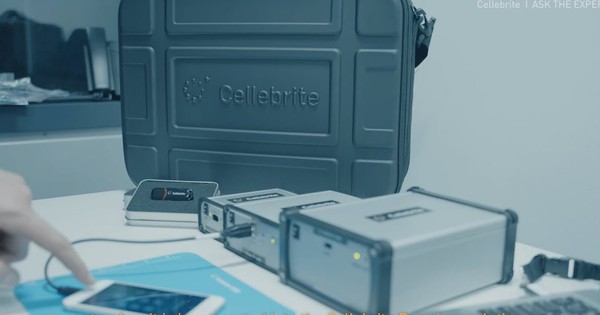There is an eye drop that helps the elderly to see clearly, without wearing glasses
The first thing I had to do after buying my dad a smartphone was to go into the settings, increase the screen brightness, font size and icons. That’s because like many other elderly people, my father also suffers from presbyopia.
Presbyopia is a condition in which the eyes are aging, their ability to adjust, and their ability to adjust, making it impossible for the elderly to clearly see nearby objects. The condition usually begins at age 40 and currently affects more than 1 billion people worldwide.
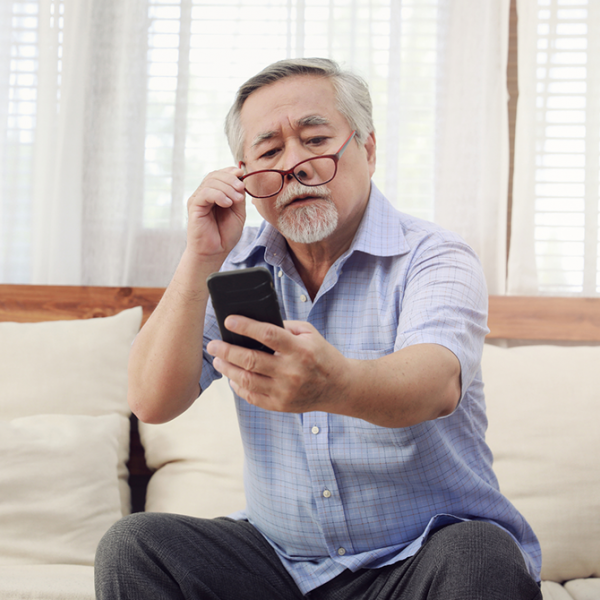
Until recently, the only common remedy for correcting presbyopia in the elderly was wearing presbyopia. A magnifying glass is essentially a converging lens that allows the position of the image to be adjusted to the wearer’s retina.
But the problem with my father was that he was also often absent-minded. Wearing glasses and forgetting them somewhere is a common occurrence. So when the U.S. Food and Drug Administration (FDA) approves an eye drop they claim to be “the first and only for the treatment of presbyopia“, I noticed it.
This eye drop is called Vuity and here’s the science of how it works.

When the focusing mechanism of the eye fails
First of all, to understand how Vuity eye drops work, we need to understand the focusing mechanism of the eye. The aim was to see for the elderly, where did it go wrong and where Vuity could be of help?
A common comparison, people often liken the eye to a camera lens. Accordingly, our eyes have a number of specific parts that interact with light to create a clear image of an object.
First, light will hit the cornea, the transparent outermost layer of the eye that bends light. The light then continues to pass through the iris, where there is a hole called the pupil.
The pupil or pupil is the same part as the aperture of a camera. It can contract or expand to let more or less light into the eye.

Light then passes through the lens, which further warps the light, shrinking the image of the object and focusing it right on the center of the retina – the part known as the retina. sensor in the camera.
Here, on the surface of the retina are millions of light-sensitive cones and rods, which act as pixels that receive light signals, convert it into nerve signals and transmit them to the brain. to be interpreted into images in each person’s perception.
Just like a camera, to create a clear image, your eyes need to focus on the subject. It does this based on 3 steps:
1. Direct your eyes to the object you want to see
2. Adjust lens curvature to change focus
3. Shrink the pupil to adjust the aperture
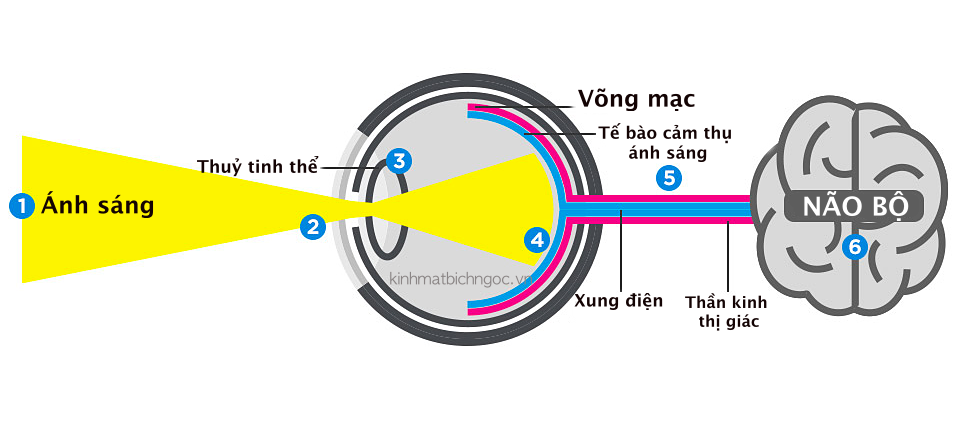
Once you direct your gaze on the object of interest, a small muscle fiber in the eye contracts, changing the shape of the lens, making it thicker. The thicker the lens, the more light is bent as it passes through it.
At the same time, the pupillary muscles also narrow the aperture of the eye to block some light rays coming from other objects at a distance. As a result, when light bounces off an object and enters your eye, it converges at the center of the retina, where the image becomes clearest.
Blocking scattered light with the pupillary constriction mechanism also helps to sharpen images of close objects.
Unfortunately, studies show that the muscles that control the lens in older people’s eyes have aged, making it no longer able to contract effectively. Another theory is that as the lenses age, they become harder and harder to change shape.
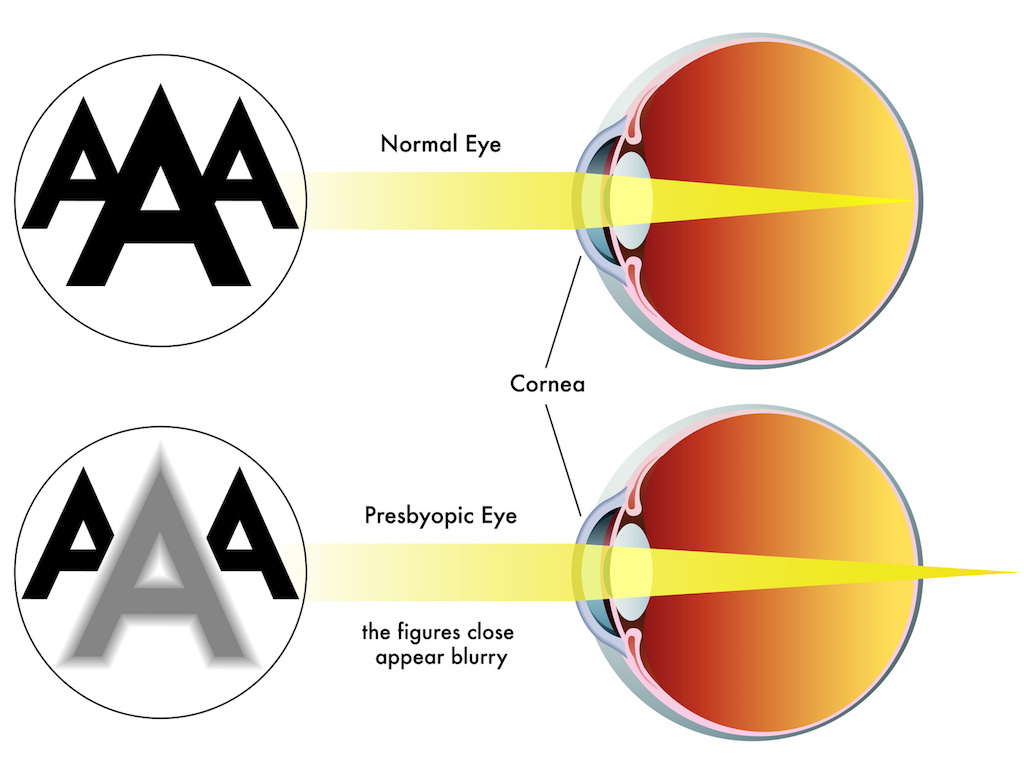
The converging image of a nearby object always “falls” behind the retina of a person with presbyopia.
But whatever the cause, the focusing mechanism of old people’s eyes is faulty, causing the focused image of the nearby object to always be “”fall” to the back of the retina. As a result, they cannot see objects that are close up clearly.
Wearing a pair of eyeglasses, which means an additional converging lens, will help bring the image back into place and help the elderly see clearly. But now, they will have a new option, if they do not want to have to wear glasses all day.
How do Vuity eye drops work?
Remember, there are two main mechanisms the eye uses to focus on close objects: lens correction and pupillary constriction. Since presbyopia limits the lens’ ability to change shape, Vuity eye drops will target more pupil constriction as a compensatory mechanism.
Constriction of the pupil reduces the amount of scattered light. This causes light entering the eye to be better focused on the retina, creating a wider distance where objects are in focus and allowing older people to see both near and far objects clearly:
After instilling the drops in the eyes, it takes about 15 minutes for the active ingredient called pilocarpine to start working. Pilocarpine is a drug first discovered in the late 1800s. It was originally used to treat conditions such as glaucoma and high blood pressure in the eyes.
The miosis effect of Pilocarpine will last for about 6 hours. The FDA has approved this medication as a once-daily dosing in each eye. So it means that elderly people with presbyopia can say goodbye to their glasses for six hours a day – depending on how much time they choose.
However, because a smaller pupil means less light enters the retina, older people may not be advised to take Vuity at night. As for the side effects, it can cause a little headache or red eyes in some patients. In addition, there are no serious side effects.
The cost of this drug is about 80 USD (equivalent to 1.8 million VND) for a vial. If the patient drops the drops daily, each vial will last for about a month. It is 60,000 VND per day and 10,000 VND per hour of clear vision.
Thus, it can be seen that while Vuity is not yet a miracle drug for the elderly with presbyopia, some patients will find it as a great, short-term alternative if they do not want to. wear glasses.
In addition, scientists are still researching more types of anti-presbyopia eye drops for the elderly. Some target non-steroidal anti-inflammatory drugs that help constrict the pupils – similar to Vuity.
Some other research has gone in the direction of creating a drug that softens the lens, helping it to restore its ability to adjust and elastic. Finally, there is one study that uses electrical impulses to stimulate the muscles in the eye to strengthen them.
Surely as young people now age, the world of the future will have more options for our presbyopia.
Refer Theconversation
at Blogtuan.info – Source: genk.vn – Read the original article here
